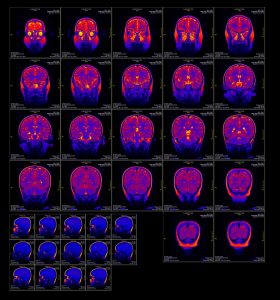
Data handling, management and processing
The new NeuRA MRI Facility is officially open for business and with it comes a new data storage and sharing platform.
But first – a bit of history.
Where it all began
NeuRA has been providing research imaging services on-site since 2003, with the establishment of a joint clinical and research partnership between NeuRA (then POWMRI – the Prince of Wales Medical Research Institute) and Mayne Health.
This magnet has been in almost constant use since 2003 and has generated a wealth of research data.
The “samurai” servers and the hippocampus sharing service
Shortly after the first MRI was installed, NeuRA provided storage and processing facilities for the research data captured on the machine, and the samurai set of servers were installed and configured to allow this. These servers acted as DICOM SCP nodes for the transfer of data from the MRI console to research data storage, and presentation of these scans to the associated dedicated MRI processing servers.
In 2012, the “Hippocampus” file sharing service hippocampus.neura.edu.au was programmed by NeuRA IT and brought online to facilitate access to scans by groups external to NeuRA, acting as a self-service portal to allow the collection of research scans.
The new world, with extra opportunities for processing, collaboration and sharing

Introducing XNAT – the “Extensible Neuroimaging Archive Toolkit”. XNAT has become a widely adopted platform for the storage and management of imaging data and imaging projects. It can handle a wide variety of neuroimaging formats and whilst is perfectly suited for MRI use, it is also capable of handling any time of image format (e.g. it could be used as a more standard Digital Asset Management server if required).
NeuRA selected XNAT as their informatics platform for a number of reasons, these included:
- open-source – all code is available for inspection and open to contribution or modification
- extensible – through internal tools and pipelines (see below), plus via the XNAT API and the XNAT Marketplace
- pipelining – XNAT has a powerful pipeline engine for complex data analysis and to take advantage of compute clusters
- scaleable – pipelines can be run on local processing, and can also shift onto higher performance computing clusters – have a read of some case studies
- collaborative – XNAT allows fine grain secure controls around project access, rights and roles whilst making it easy for collaboration across research groups and sites. This will allow us to retire the Hippocampus service in time.
The rapid archiving capabilities within XNAT means that we can now make data available to researchers within minutes of the scan session completing. Previously there was an overnight delay with a sorting algorithm running on the samurai servers, with data not available until the following day.
We’ve got a lot of plans for new data processing possibilities on the new platform, so stay tuned!
Recent Comments